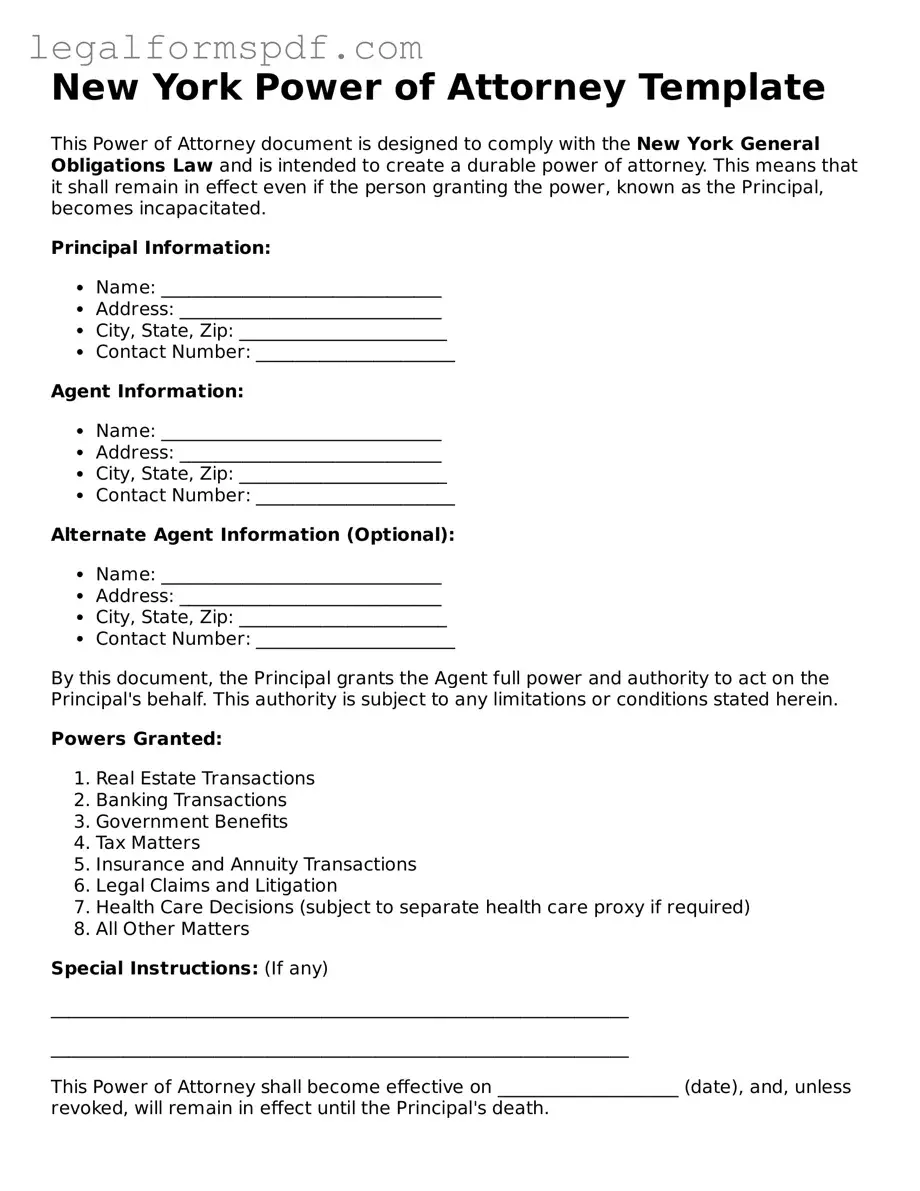What is a New York Power of Attorney form?
A New York Power of Attorney (POA) form is a legal document that allows an individual, known as the principal, to appoint someone else, known as the agent or attorney-in-fact, to make decisions on their behalf. These decisions can pertain to financial, legal, or health matters. The extent of the authority granted can be broad or limited, depending on how the form is filled out.
Who can be designated as an agent in a New York Power of Attorney?
In New York, almost anyone can be designated as an agent, as long as they are of legal age (18 years or older) and of sound mind. This can include a close friend, family member, or even a trusted professional advisor. It's crucial to choose someone who is reliable and willing to take on the responsibilities involved.
When does a New York Power of Attorney become effective?
The effectiveness of a New York Power of Attorney depends on the preferences outlined in the document itself. Some POAs become effective immediately upon signing, while others are set to become effective upon the occurrence of a specific event, often the principal's incapacitation. This is known as a "springing" Power of Attorney.
How can a New York Power of Attorney be terminated?
A New York Power of Attorney can be terminated in several ways: if the principal revokes it, upon the principal's death, if the document has a specific end date and that date is reached, if the purpose of the POA is fulfilled, or if the agent is unable to perform their duties and no successor agent is named.
Is a lawyer required to create a New York Power of Attorney?
While it's not required to have a lawyer to create a Power of Attorney in New York, consulting with a lawyer can be very beneficial. A lawyer can ensure that the document meets all legal requirements, accurately reflects the principal's wishes, and can provide advice on complex issues like choosing an agent and defining their powers.
What are the responsibilities of an agent under a New York Power of Attorney?
An agent is expected to act in the principal's best interest, maintain accurate records of all transactions made on behalf of the principal, and avoid conflicts of interest. They should carry out tasks as specified in the POA document, and may not act beyond the authority granted to them in the document.
Can a New York Power of Attorney grant authority over healthcare decisions?
A standard Power of Attorney in New York does not grant authority over healthcare decisions. For healthcare decisions, a separate document called a Health Care Proxy is used. However, a Power of Attorney can grant authority over personal care management and medical billing.
Do I need to register my New York Power of Attorney with the state?
Generally, New York State does not require a Power of Attorney to be registered upon execution. However, if the agent will be conducting real estate transactions, the Power of Attorney must be recorded with the county clerk in the county where the property is located.
Can I change my mind after executing a New York Power of Attorney?
Yes, a principal can revoke or change their Power of Attorney at any time, as long as they are of sound mind to do so. To revoke a POA, the principal should provide written notice to the agent and to any institutions or parties that were relying on the original POA.
